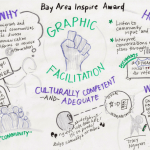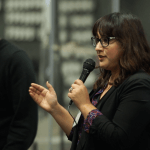Young Sisters in Creative Connection: A Bay Area Inspire Awards Project
By: Tatiana Chaterji, Bay Area Inspire Awards Recipient (2016)
At the start of 2016, Philanthropic Ventures Foundation (PVF) awarded grants to eight young Bay Area residents with fresh ideas for building better communities. These awards were made possible through the Bay Area Inspire Awards, which provides $10,000 grants to 18-30 year olds living in San Francisco, Alameda, and San Mateo Counties. Below is a piece written by one of these awardees, Tatiana Chaterji, who used her award to conduct “healing arts” (restorative justice and liberatory theater arts) workshops for young women in juvenile hall, on probation, and at risk, focusing on expression through dialogue, writing, and dance.
“See, you can’t expect us to open up about ourselves if you don’t do the same. Thank you for sharing. I appreciate you.”
Kirah gets up to get another slice of pizza, her warm smile keeping the circle whole even though she has stepped outside it momentarily. On a stormy day in Oakland, we are sitting in a cozy circle of chairs and couches. Many of the girls are sharing blankets, leaning on one another as we take turns, passing around a small wooden elephant as our talking piece. On colorful paper-tents in the center of the circle, I have carefully written our collective values and group norms:
Respect Yourself, Others & the Space — Positive Attitude — Revolutionary Love — Speak & Listen from the Heart — Try New Things — Be Present — One Mic — Uplift & Celebrate Every Sister in the Room
We are in the midst of a community-building circle. The prompt is “If you really knew me…”, and I’ve just finished my turn. I ended up talking about private battles with self-loathing and the unhealthy coping habits I’ve picked up along the journey. Tamara, a case manager who is working at the other side of the room, gives me a sharp look. She later chastises me, playfully but sternly: “Be careful with what you share with clients. We want to model positive behavior, right?” But I am glowing in the acceptance and love with which the young women received my vulnerability. They validate the internalized oppression that I’m naming, the hurt that we direct inward as women. There is a range of gender expression in the room, but none of us are cis-gendered or have male-bodied privilege, and all of us get it.
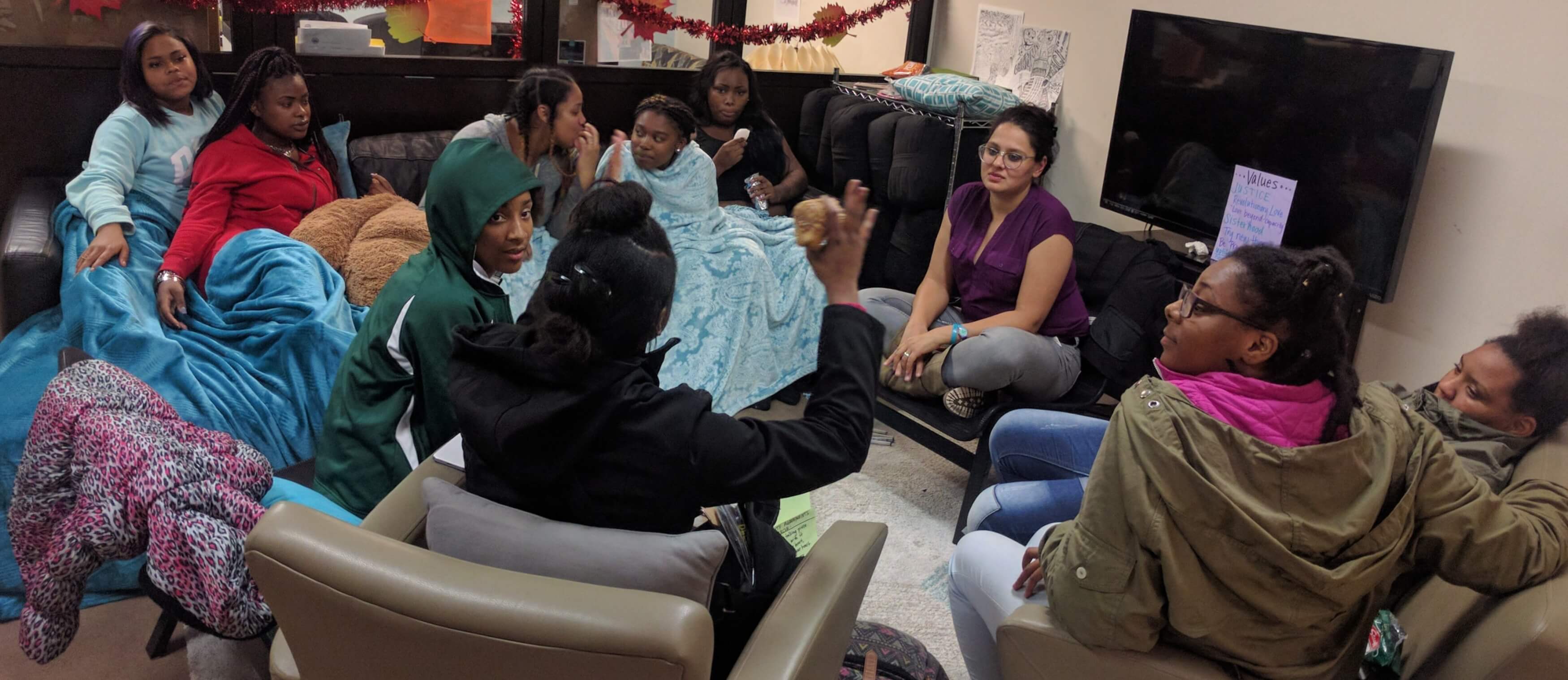
Healing Through Restorative Justice & Liberatory Theater Arts
Because the majority of people who become criminalized are men and boys, the restorative justice movement has subsequently focused on men and boys. Women of color, in particular, are erased from the conversation. I have long been concerned with racially-based school discipline and use of excessive force against Black girls, but I have learned that there is a frightening underside to our school-to-prison pipeline, a sexual-abuse-to-prison pipeline, which affects girls at an alarmingly disproportionate rate.
Young Sisters in Creative Connection is a workshop series of arts-based healing practices with adolescent girls who are impacted by the criminal-legal system. In a society where sexism and racism play out on girls of color through violence, behavioral double standards, and invisible traumas, the workshops recognize, retrieve, and ritualize young women’s inherent power.
The project is inspired by lived experiences of violence and violation – of my own and of my neighbors, community members, relatives, and friends. Without the adequate means to heal, we cycle in and out of harmful ways of relating to each other. Recognizing that “hurt people hurt people,” I envision alternatives to the criminalization of wrongdoing.
My workshops merge two modalities: restorative justice (circles, self-reflection, storytelling) and liberatory theater arts (Theatre of the Oppressed, Playback Theatre, Psychodrama, performance poetry, movement). It is at once an experiential process and a training space: the youth are both participants in circle and theatrical exploration, as well as trainees in circle-keeping and creative facilitation.
To date, I have led 5 sessions inside of Juvenile Hall (Alameda County Juvenile Justice Center) and 10 sessions with youth who are not in detention but either on probation or at-risk. Between 6 and 12 girls attend each time. My intention is to bridge the sensitive and traumatizing periods of detention and re-entry through the common language of theater, circle process, and restorative principles.
A Safe Container for Youth Development & Artistic Freedom
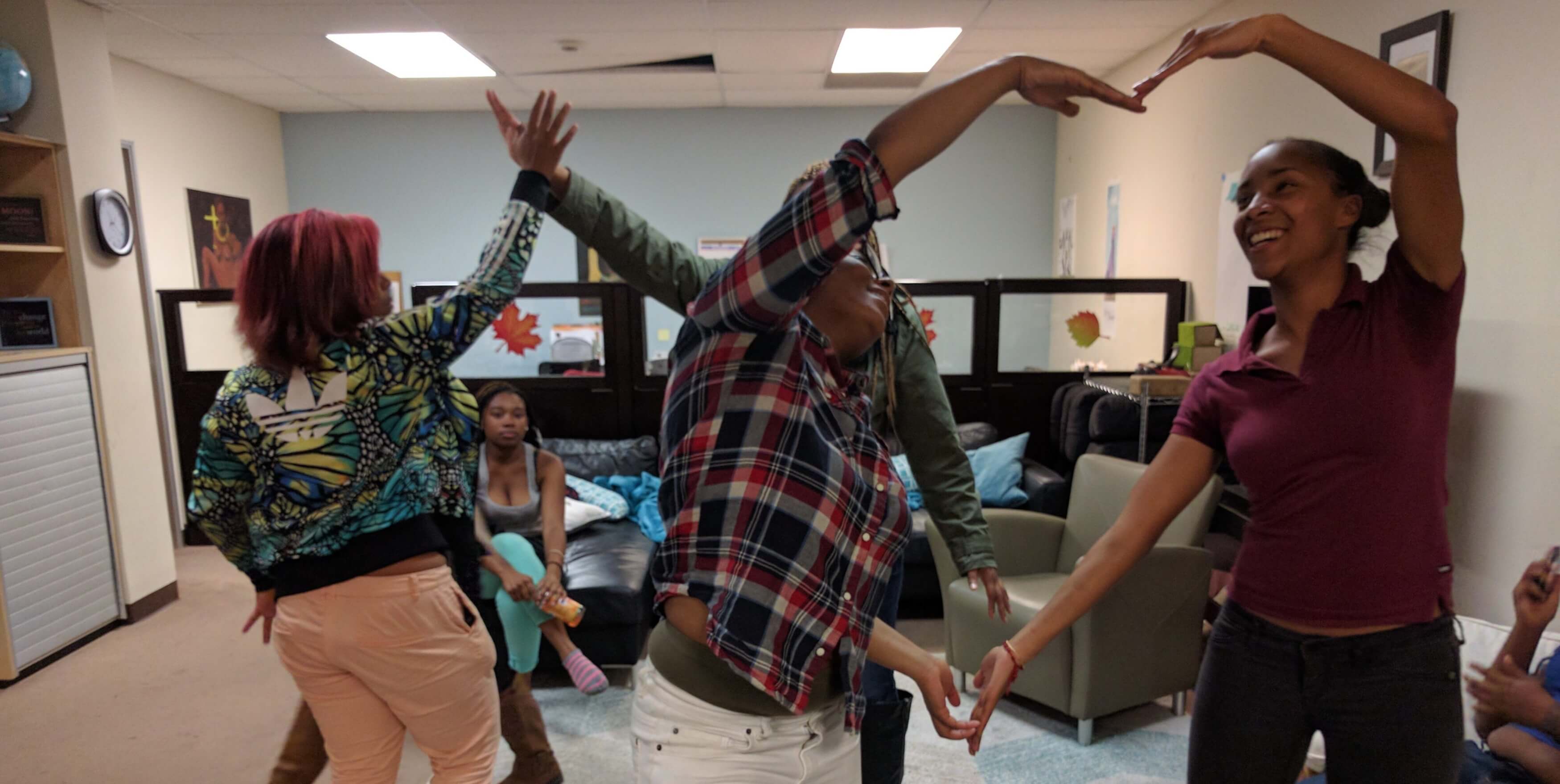
“Erika, can you explain to our new participants what we do in this class?” We are in Juvenile Hall, where the detained population shifts rapidly from week to week. It is here that we can vividly see the revolving door from community to courtroom to jail-cell and back to the streets.
“Sure! We do a lot of activities here, mostly about body language.” I feel my heart warm at this honest description of the work. I am encouraged that she has grasped not only the artistic components, which can be abstract and nonsensical, but also the practical applications of how we communicate with our bodies. This awareness is an indication of social-emotional development, an essential part of positive socialization.
The work is slow and deep. Together with my co-facilitator Xirix (a young Oakland artist, educator, and former student), we have established a safe, fun, and trusting container by modeling non-judgmental inclusiveness. While there has been a drop in participants, we have a consistent core group. We are in the middle of exploring our identities and the social conditions that limit our ability to express ourselves. Once we understand our personal needs, we can think about broader social needs and develop our vision for social change.
Earning the trust of a group of teenagers who hold intense trauma, and whose individual participation is irregular because of their traumatic life circumstances, is perhaps my biggest accomplishment. I never take for granted my ability to connect with those who are different from me. When things click, it’s magical. It humbles me each time.
Entering my 30s, carrying trauma of my own (and on bad days, wearing it on my sleeve), I frequently make mistakes in relating to adolescent youth. Sometimes it is subtle – speaking in a tone that is interpreted as hostile. Other times, faced with a distractible group, and frustrated that I can’t maintain focus, I have threatened to leave. When the words come out, they feel harsh and punitive – enough to make a young person shut down and close herself off to me. I realize this, and begin the work of repairing relationships. I must be flexible in my mind, generous in my spirit, and above all, overflowing with love. Love beyond capacity, beyond what I imagine to be possible.
A simple partner exercise, “Complete the Image,” considers how we tell stories based on how we shape our bodies. One person assumes a posture and freezes. Their partner responds. After creating a sequence of freeze frames in silence, they then “come to life.” Usually a group of beginners will need extra help in order to create an impromptu scenario, but my participants don’t hesitate. They listen to instructions, follow them, and then expand into a brilliant improvisation based on the themes that emerge. Spread across the room in pairs, they fluidly slide into simultaneous dialogues spanning conflict (an eviction of a mother from her home) to peace (helping a stranger at the hospital).
The youth are artists, already, and this makes it easy to re-center. I can bring back the tenderness and relaxed energy that the artistic process requires. Their creative intuition gives me goosebumps.
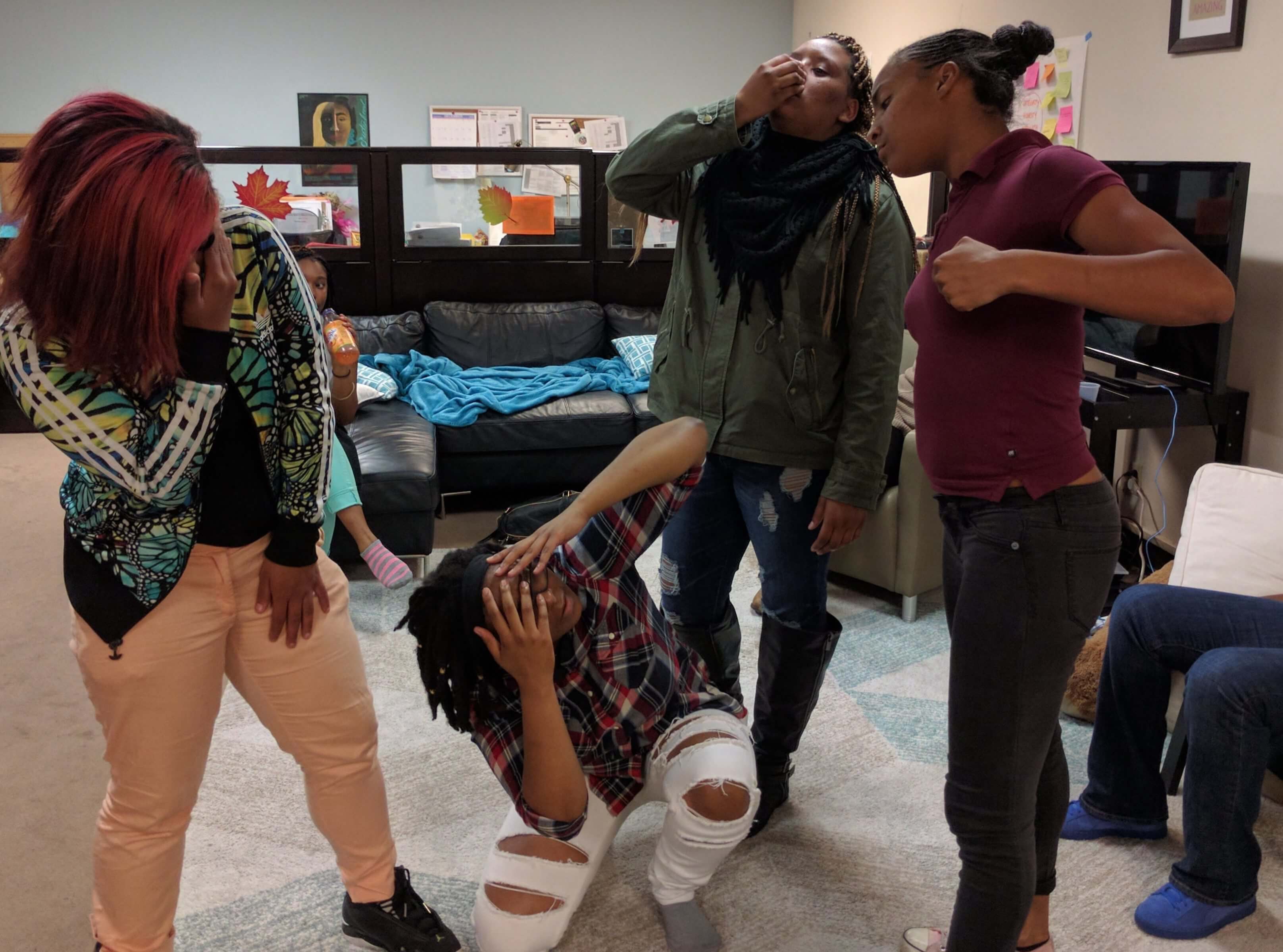
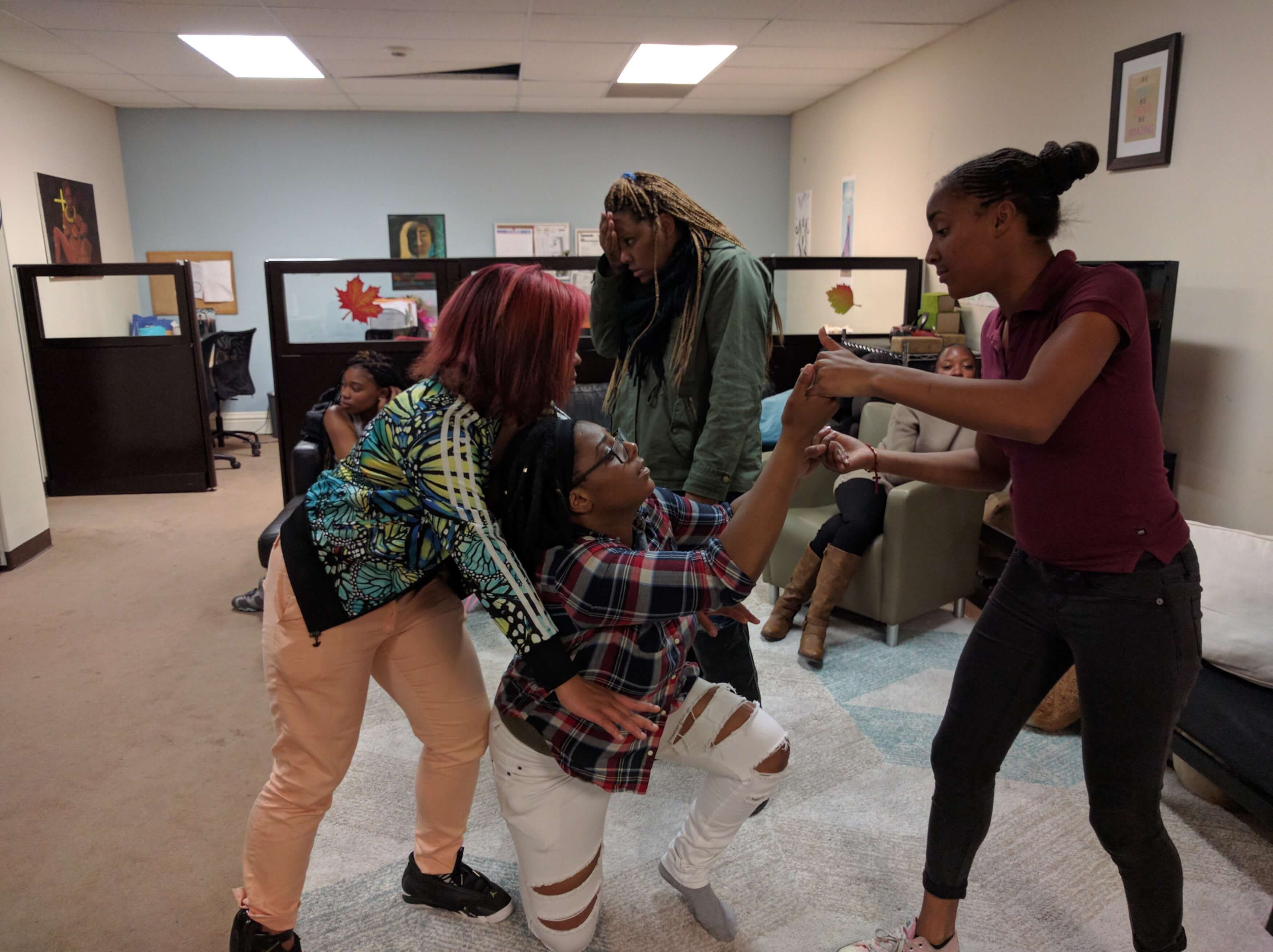
Vision for Restorative Economy
Two days after the 2016 presidential election, as we are reeling from sadness, uncertainty and shock, I decide to hold a restorative justice circle. The girls slowly trickle in – a trio getting off the bus that took them from school in the deep East, a young mother from picking up her toddler at daycare, one from her job at the mall, and another all the way from Stockton where her new group home is located.
I’ve made pasta and garlic bread for everyone. In my culture, we communicate our emotions through cooking and food. I grew up watching my Bengali relatives prepare even the simplest meals with elaborate care. The act of accepting, appreciating, or refusing a meal carries a corresponding weight and meaning. On a day like this, it feels especially important to show love by cooking for others in my community.
We settle around the table, and I hand out a worksheet. In the center of the page is a big circle with the question, “Who are you?” written above it. Around it are other questions, each one with an empty box to fill with words or drawings. What are your survival skills? What are the parts of your personality that feel most powerful? What are the most important lessons you’ve learned about living?
The questions prompt introspection about identity, meaning, and personal values. For many of the girls, the one that stands out is: What are your wishes for humanity? In our circle, we discuss what mark we want to make on the world and what our contribution will be.
When it’s my turn to speak, I take the opportunity to explain why I’m here in the first place, to provide context for my project and the workshop series. “My goal is to get money into your pockets. Real money, money that means something. There aren’t enough youth jobs, not even if you graduate from college, and you don’t always have the stability to follow your dreams, you know? Because you have to eat, pay rent, everything, right?” Several girls are nodding. Jana remarks that she’s never heard anyone ever say that they want to put money in her pockets. To learn, to make positive choices, to do anything. She’s amazed.
I go on to introduce the principles of restorative economics, and challenge them to question where money goes, what things are worth, and who is best suited to make those decisions. Many of them have heard the slogans that organizers at the Ella Baker Center (among others) use to frame the discussion: Jobs not Jail! Books not Bars! Housing not Handcuffs! Restorative justice always goes to the victim – the party who has been harmed – first. Girls of color in the sexual-abuse-to-prison pipeline are exactly these people, at the crossroads of multiple painful, exclusionary systems of oppression.
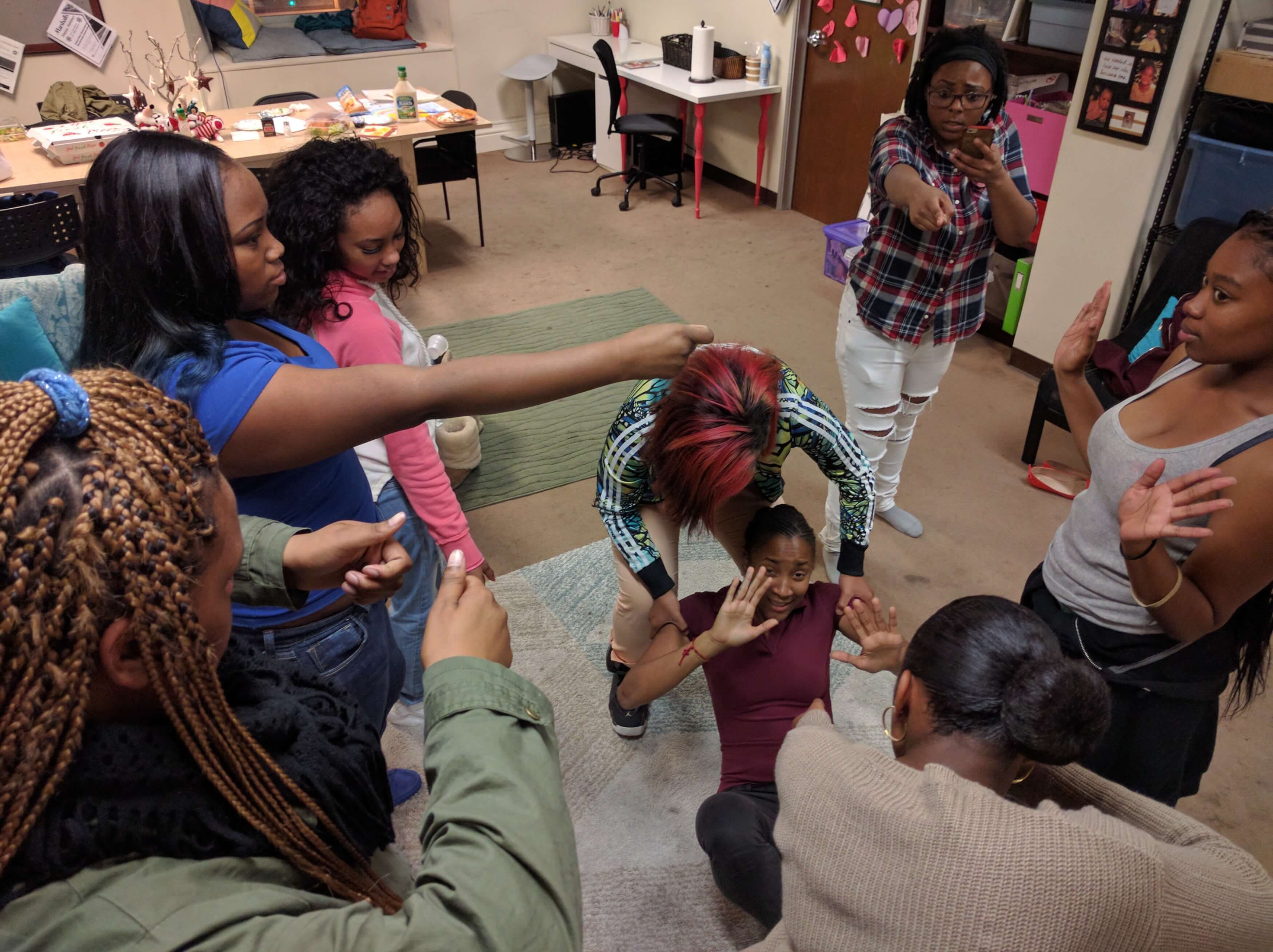
After gaining fluency in the languages of circle, dramatic improvisation, public speaking, and embodiment, my workshop participants are invited to co-facilitate workshops in the community – additional paid gigs. I am providing stipends that are higher than minimum wage. The financial incentive is critical for a few reasons:
- Lack of support or stability from family: most participants are in foster care or group home
- Competing street economies and social forces that drive them: many of the girls are involved in the underground economy, both coercively and independently
- Acculturation to professional working norms and basics of financial literacy (wage compensation, hourly pay, receiving a paycheck, opening a bank account)
My vision is to create an alternative pipeline to the one that leads to prison – a restorative economy, where we invest in people rather than in industries that profit at the expense of people and their suffering. In my years working in youth development, I see that we are never able to fundraise enough to compete with the “fast money” that the youth can earn on the street. Instead, I see our role is to open alternative pathways toward their professional and artistic growth. They are already fighting for their self-determination; my task is to expose them to new ideas, structure spaces for them to imagine the life and livelihood that would be most fulfilling to them, and welcome them into a web of non-profit, educational, community-based organizations to broaden their prospects.
With the Bay Area Inspire Awards, I am able to put money into the hands of those who have the answers (even if they don’t know that, yet). Theater allows us to find those answers, collectively, giving us the tools to imagine radical possibilities. We need to be listening.
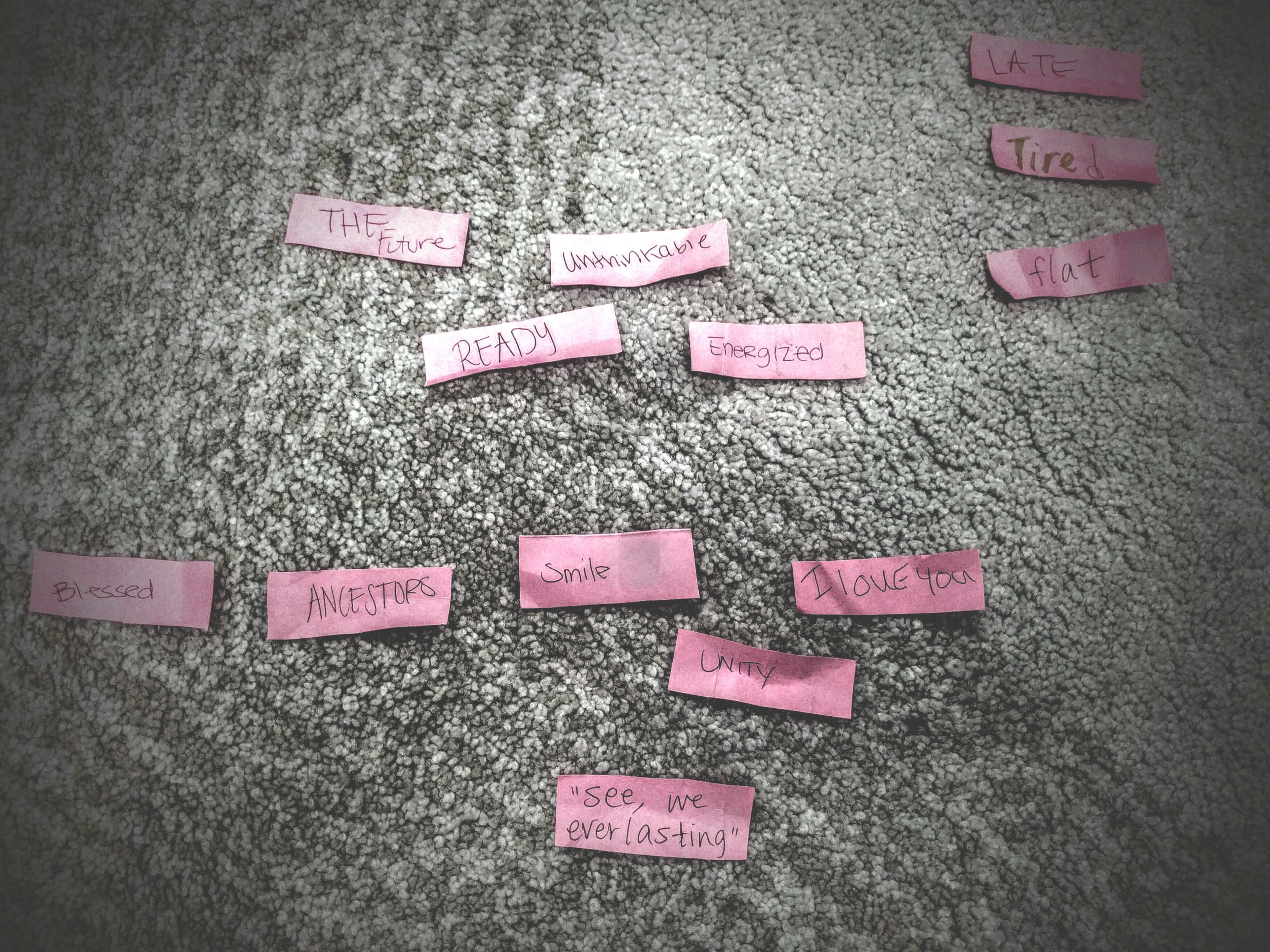
Looking Ahead: Next Steps
I will incorporate my colleagues as guest facilitators, a few women who have been sisters and mentors in my journey. Their gifts in circle, healing, and artistic expression will widen the net of hope and love for the youth participants. They are women of color who have suffered under-recognition due to the same intersectional forces of sexism and racism.
I will also invite the girls who have demonstrated talent and interest to facilitate workshops with me in other settings. There are a couple of young women in particular who are natural leaders, and embody the principles of restorative justice and arts-based healing. I want to validate their professional development in this arena through paid opportunities in the community. I have received several invitations from social justice coalitions.
Lastly, I will collaborate with a filmmaker who can document the workshops to visually capture the power and beauty of this work.




